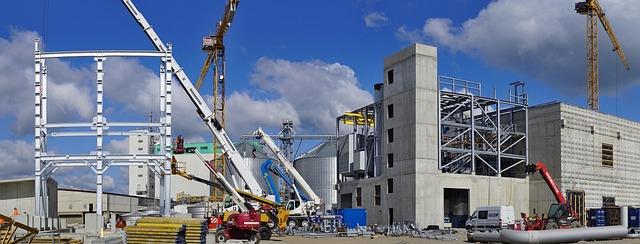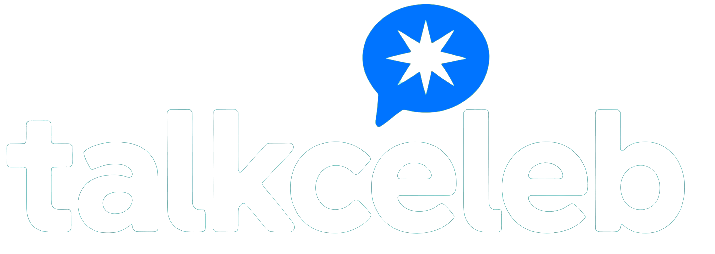In the relentless rhythm of today’s industries, the pressures weighing on professionals often go unspoken, hidden beneath polished presentations and curated success stories. “Unfiltered Talks About Industry Pressure” seeks to peel back that glossy veneer, offering candid conversations that illuminate the realities behind the headlines. This article invites readers to step into the raw, unvarnished world where expectations clash with individuality, deadlines breed stress, and the pursuit of excellence walks a tightrope over mental well-being. Here, the dialogue is honest, the struggles authentic, and the insights invaluable—because understanding the true nature of industry pressure is the first step toward navigating it with resilience.
Table of Contents
- Understanding the Roots of Industry Pressure in Modern Workplaces
- The Impact of High Expectations on Employee Wellbeing and Performance
- Navigating Challenges Without Compromising Authenticity
- Strategies for Managing Stress and Maintaining Mental Health
- Creating Supportive Environments That Encourage Open Communication
- Practical Steps to Foster Resilience and Sustainable Success
- Q&A
- Key Takeaways

Understanding the Roots of Industry Pressure in Modern Workplaces
In today’s hypercompetitive landscape, industry pressure often stems from an intricate web of factors that linger beneath the surface of daily workflows. Far beyond looming deadlines, these pressures arise from relentless technological advancements, shifting consumer expectations, and the unforgiving pace of market globalization. Companies must innovate rapidly while managing costs, all while fostering a work environment that balances productivity with employee well-being. This creates a paradox where progress and burnout coexist, forging a workplace culture often driven by unspoken demands.
Key contributors to this environment include:
- Accelerated innovation cycles pushing teams to constantly outpace themselves
- The ever-expanding digital footprint that blurs boundaries between work and personal life
- Heightened accountability measures tied to data-driven performance metrics
- Competition not only between companies but also among individual professionals striving for relevance
| Pressure Source | Industry Impact | Common Response |
|---|---|---|
| Technological Change | Skills obsolescence | Continuous learning |
| Global Competition | Price wars | Efficiency drives |
| Performance Metrics | Employee stress | Wellness programs |

The Impact of High Expectations on Employee Wellbeing and Performance
High expectations often act as a double-edged sword in the workplace. While they can drive innovation and elevate standards, they also place immense pressure on employees, sometimes leading to burnout and diminished morale. The constant chase for perfection can create an environment where fear of failure overshadows the joy of achievement, subtly eroding creativity and willingness to take risks. When employees feel that the bar is set impossibly high without adequate support, it can lead to chronic stress, affecting not only mental health but also physical well-being.
The ripple effect of these pressures extends into performance metrics, where overburdened employees might show decreased productivity or disengagement despite their best efforts. Organizations aiming for excellence must recognize the importance of balance. Key elements for sustaining positive outcomes include:
- Clear communication: Ensure expectations are realistic and transparent.
- Support systems: Provide access to mental health resources and constructive feedback.
- Flexible goals: Adapt targets in response to employee feedback and wellbeing indicators.
| Factor | Positive Outcome | Negative Impact |
|---|---|---|
| High Expectations | Innovation & Growth | Stress & Burnout |
| Employee Support | Increased Engagement | Feeling Undervalued |
| Clear Communication | Aligned Objectives | Confusion & Frustration |

Navigating Challenges Without Compromising Authenticity
In an industry rife with external expectations and rapid transformations, holding onto your true self can feel like navigating a maze without a map. The key lies in establishing clear boundaries—knowing when to say yes and, more importantly, when to say no. By setting these limits, you cultivate a space where creativity thrives without the shadow of compromise looming overhead. Embracing transparency about your values not only safeguards your authenticity but also fosters genuine connections with your audience and peers, turning potential pressure into shared understanding.
Additionally, developing a toolkit of strategies to manage stress and setbacks is essential. These can include:
- Mindful reflection to stay grounded in your mission.
- Seeking mentorship to gain perspective and encouragement.
- Regular digital detoxes to recharge and avoid burnout.
Here’s a quick overview of how different approaches support authenticity while handling challenges:
| Approach | Benefit | Potential Pitfall |
|---|---|---|
| Setting Boundaries | Protects core values | May alienate some stakeholders |
| Open Communication | Builds trust | Risk of oversharing |
| Self-Care | Boosts resilience | Time-consuming |

Strategies for Managing Stress and Maintaining Mental Health
Balancing the relentless pace of the industry while safeguarding your peace of mind requires more than just willpower—it calls for intentional, daily habits that anchor you amidst chaos. Embracing mindfulness techniques is one powerful way to slow down the mental chatter. Whether it’s through guided meditation, breathing exercises, or simply pausing between tasks, these moments create vital mental clarity. Equally important is nurturing your support system; genuine conversations with trusted colleagues or friends can deflate the balloon of stress, introducing fresh perspectives and emotional relief.
Implementing structure around your wellbeing doesn’t need to be rigid—flexible routines that prioritize rest and self-care foster resilience. Here are some proven strategies to keep stress at bay:
- Set Boundaries: Define clear work hours to prevent burnout.
- Engage in Physical Activity: Even short walks can boost mood and focus.
- Limit Digital Overload: Schedule tech-free times to reconnect with yourself.
- Practice Gratitude: Regularly acknowledge small wins to cultivate positivity.
To visualize how manageable lifestyle tweaks impact your mental health, consider this simplified comparison:
| Habit | Impact on Mood | Productivity Effect |
|---|---|---|
| Regular Exercise | Elevates energy and reduces anxiety | Enhances focus and stamina |
| Digital Detox | Lowers overstimulation and stress | Improves clarity and decision-making |
| Mindfulness Practice | Balances emotional fluctuations | Promotes presence in tasks |

Creating Supportive Environments That Encourage Open Communication
Building a culture where voices are genuinely heard starts with fostering trust and removing barriers that stifle honest dialogue. Encourage team members to share their thoughts without fear of judgment by establishing clear, supportive norms. These include active listening, validating feelings, and constructive feedback, which help create a safe space for diverse perspectives to thrive. Remember, openness is a two-way street—leaders must model vulnerability to invite real conversations about the pressures everyone faces.
Practical strategies to enhance communication can be simple yet powerful. Consider implementing:
- Regular check-ins that focus less on task updates and more on emotional well-being.
- Anonymous feedback channels to give voice to concerns that might be difficult to express openly.
- Peer support networks where colleagues can share experiences and coping mechanisms confidentially.
| Key Element | Benefit | Implementation Tip |
|---|---|---|
| Empathy | Builds connection and trust | Encourage storytelling to share personal challenges |
| Transparency | Reduces rumors and anxiety | Regularly update the team on decisions and changes |
| Respectful Feedback | Supports growth and accountability | Use “I” statements and focus on behaviors, not personalities |

Practical Steps to Foster Resilience and Sustainable Success
Building resilience is less about bouncing back instantly and more about embracing continuous growth through challenges. Cultivating a strong support network, setting clear boundaries, and maintaining a consistent self-care routine are foundational tactics. These not only replenish your energy but also sharpen your focus, creating an environment where sustainable success isn’t just a goal but a natural outcome. Embedding mindfulness practices into daily workflows can help in managing stress and maintaining clarity during high-pressure situations.
Integrating practical habits into your professional rhythm is crucial for long-term stability. Consider the following strategies:
- Regular Skill Refreshers: Schedule monthly learning sessions to stay ahead.
- Feedback Loops: Create channels for honest, constructive feedback.
- Time Audit: Review how you spend your hours to eliminate burnout triggers.
- Celebrate Micro-Wins: Acknowledge small victories as motivation boosters.
| Action | Benefit | Frequency |
|---|---|---|
| Mindfulness Breaks | Reduces anxiety | Daily |
| Peer Check-Ins | Boosts morale | Weekly |
| Skill Workshops | Enhances adaptability | Monthly |
Q&A
Q&A: Unfiltered Talks About Industry Pressure
Q1: What does “industry pressure” really mean?
A: Industry pressure refers to the intense demands and expectations placed on individuals and organizations within a specific sector. This can include tight deadlines, performance benchmarks, market competition, and the constant push to innovate or conform to trends. It’s the unseen weight that often shapes decisions, creativity, and well-being.
Q2: Why is it important to have unfiltered conversations about this pressure?
A: Unfiltered talks strip away the polished veneers and corporate speak, revealing the raw realities behind the industry facade. They encourage honesty about struggles, foster empathy, and can lead to healthier work environments by acknowledging rather than ignoring the stressors people face.
Q3: How does industry pressure affect mental health?
A: Prolonged exposure to high pressure can lead to burnout, anxiety, and depression. The fear of failing or falling behind often forces individuals to overwork themselves, blurring the lines between professional and personal life. Open conversations help reduce stigma and encourage seeking support.
Q4: Can industry pressure drive positive change?
A: Yes, when managed constructively, pressure can motivate innovation, growth, and excellence. It pushes industries to evolve and individuals to sharpen their skills. The key is balance—too much pressure can overwhelm, but the right amount can inspire.
Q5: What role do leadership and company culture play in handling industry pressure?
A: Leaders set the tone. Transparent communication, realistic expectations, and valuing employee well-being can mitigate harmful pressure. A culture that rewards effort and progress over perfection tends to be more resilient and creative.
Q6: How can individuals cope with the weight of industry pressure?
A: Strategies include setting boundaries, prioritizing tasks, seeking mentorship, and practicing mindfulness. It’s also essential to recognize when to ask for help and to remember that one’s worth isn’t solely defined by professional achievement.
Q7: What’s the takeaway from unfiltered talks about industry pressure?
A: Acknowledging industry pressure openly helps demystify it and creates space for solutions. It humanizes the workforce, promotes sustainable practices, and fosters environments where people can thrive without sacrificing their well-being. The conversation itself is the first step toward change.
Key Takeaways
In the end, the unfiltered conversations about industry pressure peel back the layers often glossed over by polished headlines and marketing gloss. They remind us that behind every success story lies a complex web of challenges, expectations, and resilience. By embracing this candid dialogue, we not only humanize the forces shaping our industries but also open the door to more authentic, sustainable growth. The pressure may never disappear, but understanding it without filters is the first step toward navigating it with clarity and purpose.

